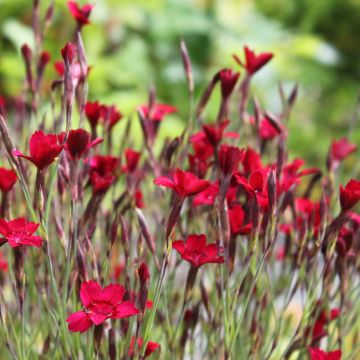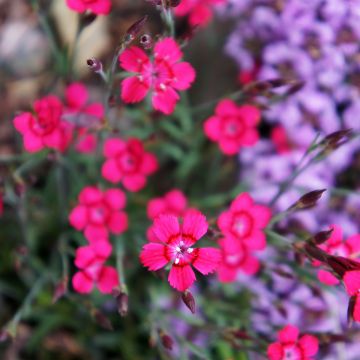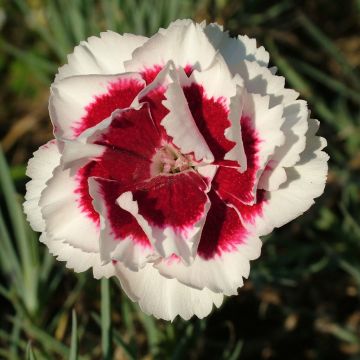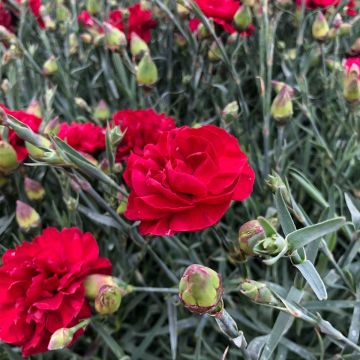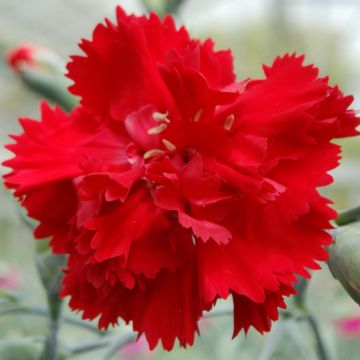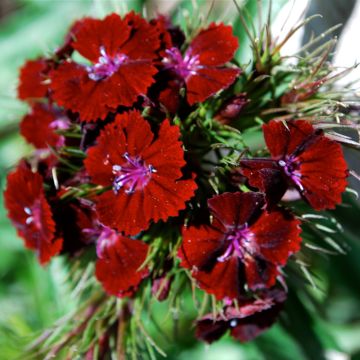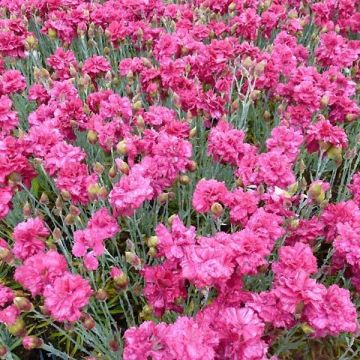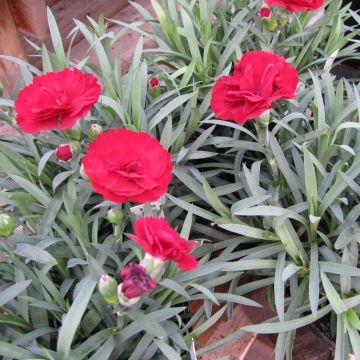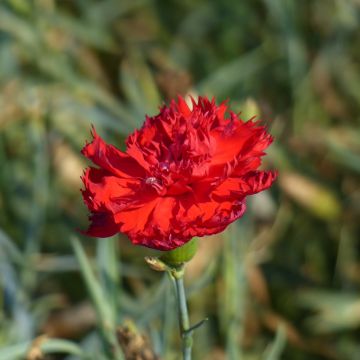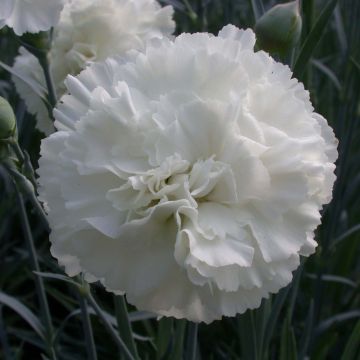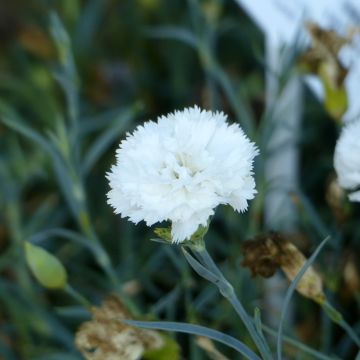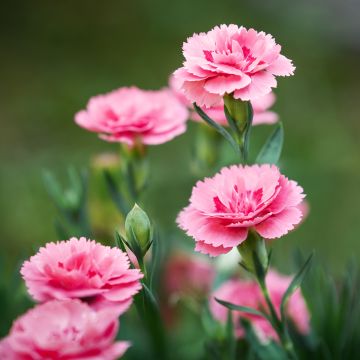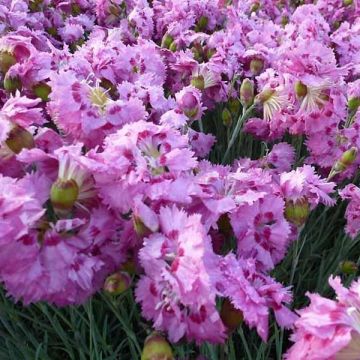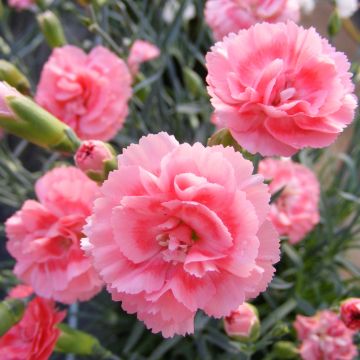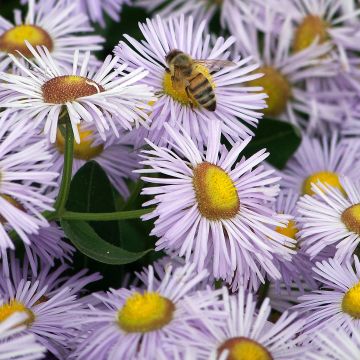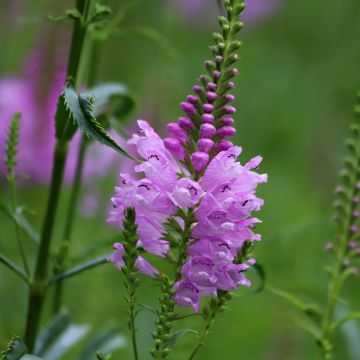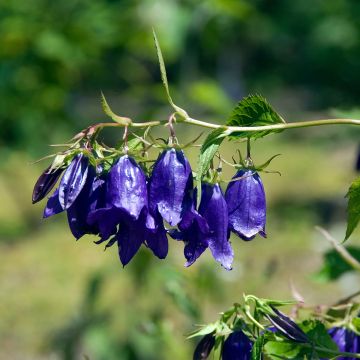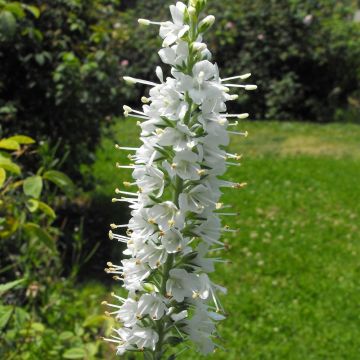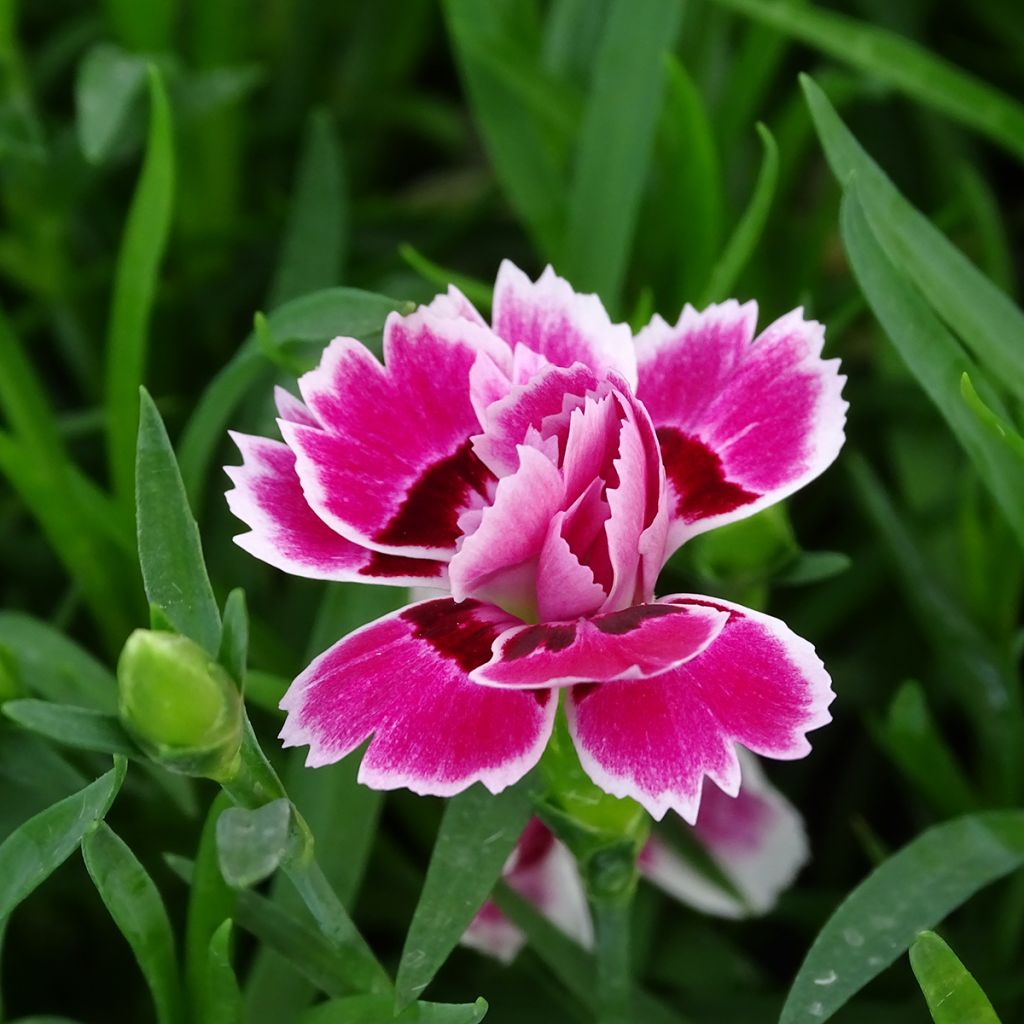

Dianthus Sunflor Red Esta


Dianthus Sunflor Red Esta
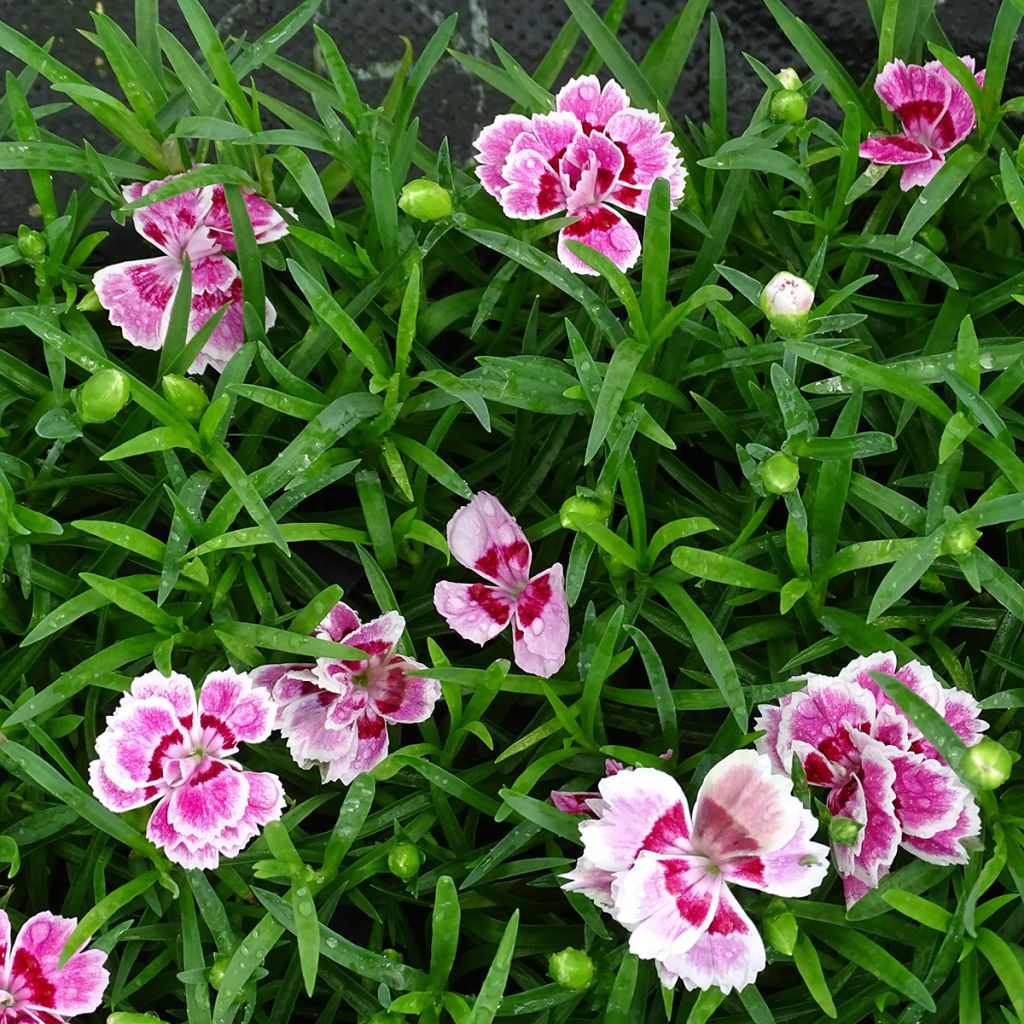

Dianthus Sunflor Red Esta
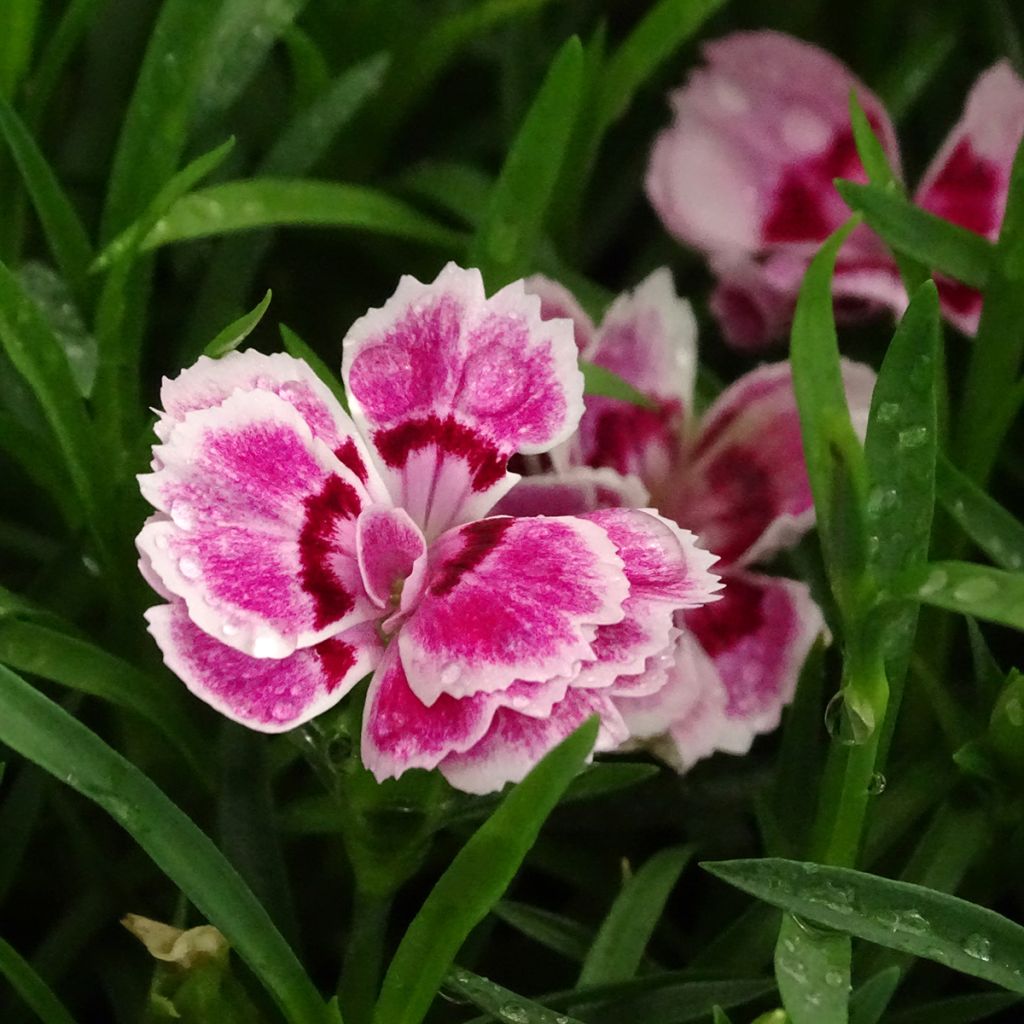

Dianthus Sunflor Red Esta
Dianthus Sunflor Red Esta
Dianthus x barbatus Sunflor® Red Esta
Sweet William
Why not try an alternative variety in stock?
View all →This plant carries a 6 months recovery warranty
More information
We guarantee the quality of our plants for a full growing cycle, and will replace at our expense any plant that fails to recover under normal climatic and planting conditions.
From €5.90 for pickup delivery and €6.90 for home delivery
Express home delivery from €8.90.
From €5.90 for pickup delivery and €6.90 for home delivery
Express home delivery from €8.90.
Does this plant fit my garden?
Set up your Plantfit profile →
Description
Dianthus Sunflor Red Esta is a perennial carnation from the Sunflor series that combines many qualities. This variety with dark red double flowers edged with white is characterized by its compact and neat habit and early, prolonged, abundant, fully double, fragrant flowering. In the garden or in a pot, it is easy to maintain and blooms throughout the season. Perfect, even in slightly chalky soil and with very little water!
Dianthus Sunflor Red Esta belongs to the Caryophyllaceae family. It is one of many hybrids resulting from cross-breeding between Dianthus plumarius and D. caryophyllus. D. plumarius, a European perennial plant and the main ancestor of various varieties of old or modern carnation. D. caryophyllus, of Mediterranean origin, has passed on its wonderful clove fragrance and tolerance to chalky, dry soils. Dianthus Sunflor 'Red Esta' grows rapidly, reaching a maximum height and spread of 20-25 cm (8-10in). It forms a small dense tuft and produces round, double flowers with a diameter of 3 to 4 cm (1 to 2in), carried by short, branched stems, from April to October. Their spicy fragrance reveals notes of cloves. Its linear, leathery, grey-blue-green leaves, are pointed and smooth and persist in winter.
Dianthus Sunflor is versatile with a great range of colours, flower shapes and plant types. All varieties in this series flower continuously from spring to autumn, withstand temperatures as low as -10°C (14°F), and have a compact growth habit. The plants can be used outdoors and indoors. The fragrant and colourful flowers are very long-lasting in small bouquets or buttonholes.
These lovely plants combine well with many small perennials, carnations, Rockroses, Silene schafta Splendens, Arabis, Wall Bellflower, Moss Phlox (Phlox subulata), Aubrietas, Erigeron karvinskianus, Rock Soapwort (Saponaria ocymoides), or Bloody Cranesbill (Geranium sanguineum). To recreate a nostalgic atmosphere, create a border with peonies and old roses. Cosmos and African Daisies are also good choices to extend the flowering period.
Note: Attention, our plug plants are professional products reserved for experienced gardeners: upon receipt, plant them as soon as possible, into pots, containers or directly in beds.
Report an error about the product description
Flowering
Foliage
Plant habit
Botanical data
Dianthus
x barbatus
Sunflor® Red Esta
Caryophyllaceae
Sweet William
Cultivar or hybrid
Other Dianthus - Pinks
Planting and care
Plant Dianthus Sunflor Red Esta in spring, in ordinary, permeable and humus-bearing, stony, even clayey or limestone, dry to moist, well-drained soil. A gravel-rich soil yields good results. In open ground, this young plant is fairly hardy, to -10°C (14°F). The more well-drained, and dry in winter, the better it will resist frost. It prefers a very sunny exposure.
Lightly prune the clump after flowering to promote new foliage and a dense habit, especially if planted in rich soil. In poor soil, apply a balanced fertiliser in March.
Planting period
Intended location
Care
This item has not been reviewed yet - be the first to leave a review about it.
Cottage garden perennials
Haven't found what you were looking for?
Hardiness is the lowest winter temperature a plant can endure without suffering serious damage or even dying. However, hardiness is affected by location (a sheltered area, such as a patio), protection (winter cover) and soil type (hardiness is improved by well-drained soil).

Photo Sharing Terms & Conditions
In order to encourage gardeners to interact and share their experiences, Promesse de fleurs offers various media enabling content to be uploaded onto its Site - in particular via the ‘Photo sharing’ module.
The User agrees to refrain from:
- Posting any content that is illegal, prejudicial, insulting, racist, inciteful to hatred, revisionist, contrary to public decency, that infringes on privacy or on the privacy rights of third parties, in particular the publicity rights of persons and goods, intellectual property rights, or the right to privacy.
- Submitting content on behalf of a third party;
- Impersonate the identity of a third party and/or publish any personal information about a third party;
In general, the User undertakes to refrain from any unethical behaviour.
All Content (in particular text, comments, files, images, photos, videos, creative works, etc.), which may be subject to property or intellectual property rights, image or other private rights, shall remain the property of the User, subject to the limited rights granted by the terms of the licence granted by Promesse de fleurs as stated below. Users are at liberty to publish or not to publish such Content on the Site, notably via the ‘Photo Sharing’ facility, and accept that this Content shall be made public and freely accessible, notably on the Internet.
Users further acknowledge, undertake to have ,and guarantee that they hold all necessary rights and permissions to publish such material on the Site, in particular with regard to the legislation in force pertaining to any privacy, property, intellectual property, image, or contractual rights, or rights of any other nature. By publishing such Content on the Site, Users acknowledge accepting full liability as publishers of the Content within the meaning of the law, and grant Promesse de fleurs, free of charge, an inclusive, worldwide licence for the said Content for the entire duration of its publication, including all reproduction, representation, up/downloading, displaying, performing, transmission, and storage rights.
Users also grant permission for their name to be linked to the Content and accept that this link may not always be made available.
By engaging in posting material, Users consent to their Content becoming automatically accessible on the Internet, in particular on other sites and/or blogs and/or web pages of the Promesse de fleurs site, including in particular social pages and the Promesse de fleurs catalogue.
Users may secure the removal of entrusted content free of charge by issuing a simple request via our contact form.
The flowering period indicated on our website applies to countries and regions located in USDA zone 8 (France, the United Kingdom, Ireland, the Netherlands, etc.)
It will vary according to where you live:
- In zones 9 to 10 (Italy, Spain, Greece, etc.), flowering will occur about 2 to 4 weeks earlier.
- In zones 6 to 7 (Germany, Poland, Slovenia, and lower mountainous regions), flowering will be delayed by 2 to 3 weeks.
- In zone 5 (Central Europe, Scandinavia), blooming will be delayed by 3 to 5 weeks.
In temperate climates, pruning of spring-flowering shrubs (forsythia, spireas, etc.) should be done just after flowering.
Pruning of summer-flowering shrubs (Indian Lilac, Perovskia, etc.) can be done in winter or spring.
In cold regions as well as with frost-sensitive plants, avoid pruning too early when severe frosts may still occur.
The planting period indicated on our website applies to countries and regions located in USDA zone 8 (France, United Kingdom, Ireland, Netherlands).
It will vary according to where you live:
- In Mediterranean zones (Marseille, Madrid, Milan, etc.), autumn and winter are the best planting periods.
- In continental zones (Strasbourg, Munich, Vienna, etc.), delay planting by 2 to 3 weeks in spring and bring it forward by 2 to 4 weeks in autumn.
- In mountainous regions (the Alps, Pyrenees, Carpathians, etc.), it is best to plant in late spring (May-June) or late summer (August-September).
The harvesting period indicated on our website applies to countries and regions in USDA zone 8 (France, England, Ireland, the Netherlands).
In colder areas (Scandinavia, Poland, Austria...) fruit and vegetable harvests are likely to be delayed by 3-4 weeks.
In warmer areas (Italy, Spain, Greece, etc.), harvesting will probably take place earlier, depending on weather conditions.
The sowing periods indicated on our website apply to countries and regions within USDA Zone 8 (France, UK, Ireland, Netherlands).
In colder areas (Scandinavia, Poland, Austria...), delay any outdoor sowing by 3-4 weeks, or sow under glass.
In warmer climes (Italy, Spain, Greece, etc.), bring outdoor sowing forward by a few weeks.

































